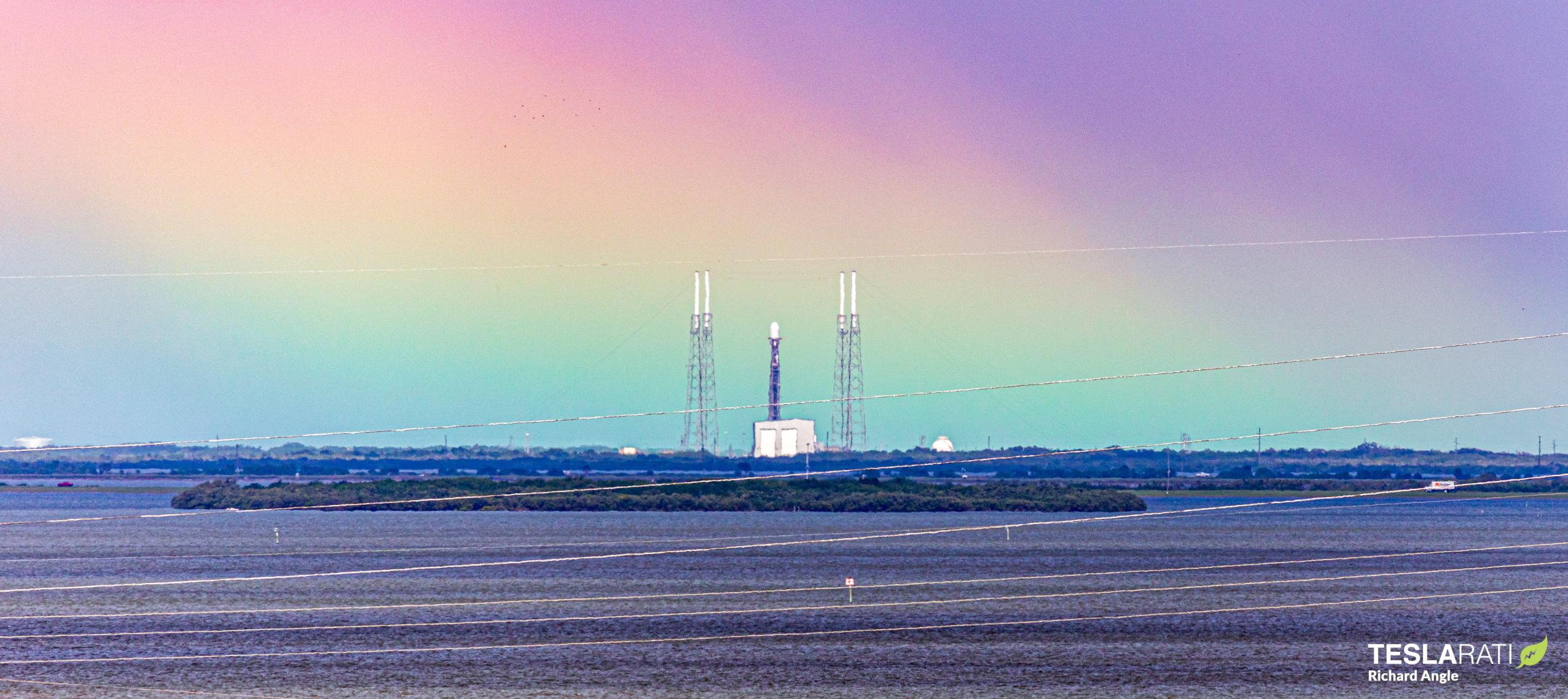

News
SpaceX scrubs Falcon 9’s seventh-flight debut for more “mission assurance”
Update: SpaceX has scrubbed Falcon 9’s seventh-flight debut and the 14th Starlink launch this year to allow more time for “data reviews” and “additional mission assurance” and is now scheduled to launch Starlink-15 no earlier than (NET) 9:34 pm EST (02:34 UTC) Monday, November 23rd.
In a tweet shortly after the decision was made, SpaceX said that both the Falcon 9 rocket and Starlink payload were still healthy, adding a bit of mystery to the decision. On SpaceX’s official mission control audio stream, the Starlink-15 launch director (LD) – most likely Ricky Lim – announced the scrub around T-35 minutes, effectively the deadline for the start of Falcon 9 propellant loading. For whatever reason, SpaceX was not confident enough to commit to launch and LD stated that the scrub had been called to allow for “additional mission assurance” – the second time in recent memory that the company has used that particular industry euphemism.
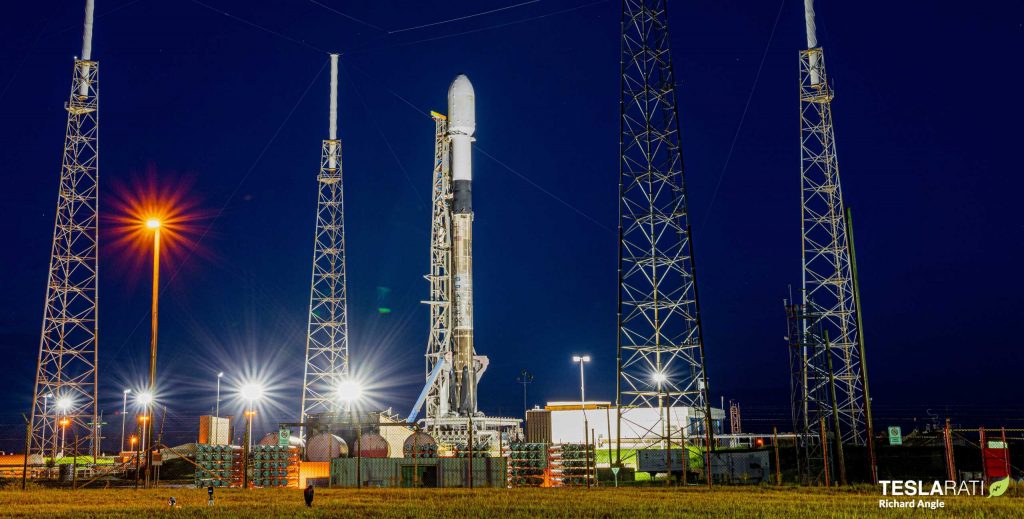
Regardless of the reason, the first seventh flight (sixth reuse) of a Falcon 9 booster is certainly cause enough for caution, as it means that SpaceX is very literally pushing the envelope of orbital-class rocket reusability. Thus far, the company’s record of success during similar first-flight reuse milestones remains flawless – the preservation of which will likely go far to salve the anxieties of more conservative customers like NASA and the US military.
SpaceX says that Starlink-15’s November 23rd backup date may not hold per the threat of bad weather at Falcon 9 B1049’s Atlantic Ocean landing zone several hundred miles downrange. Stay tuned for updates as the company tracks towards what could be its first four-launch month ever.
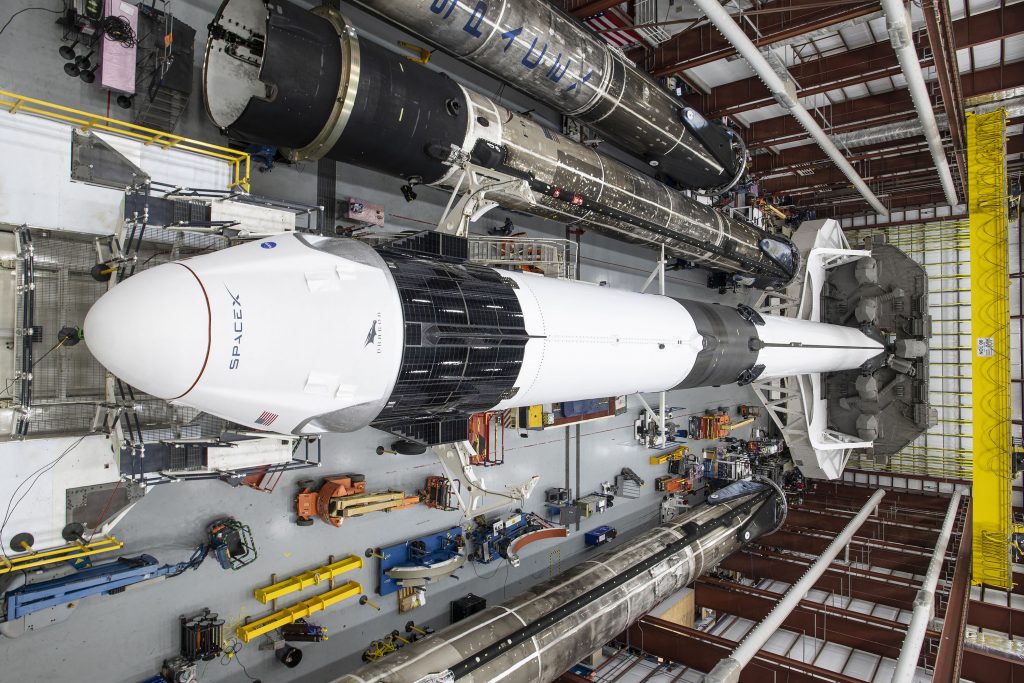
SpaceX has static fired a record-breaking Falcon 9 booster and says it’s ready to launch its 14th Starlink mission this year just a day and a half after sailing past the company’s previous annual launch record.
Set in 2018, SpaceX’s previous annual launch record stood at 21 missions – 20 Falcon 9s and one Falcon Heavy. Now, a little over halfway through November, SpaceX has easily bested itself, launching for the 22nd time to deliver oceanographic satellite Sentinel 6A to a polar orbit on November 21st.
Back on the East Coast, SpaceX fired up six-flight Falcon 9 booster B1049 just five hours after Sentinel 6A’s successful launch, setting the rocket up for its seventh flight – a first for SpaceX and reusable rocketry – in support of Starlink v1.0 Flight 15 (Starlink-15).
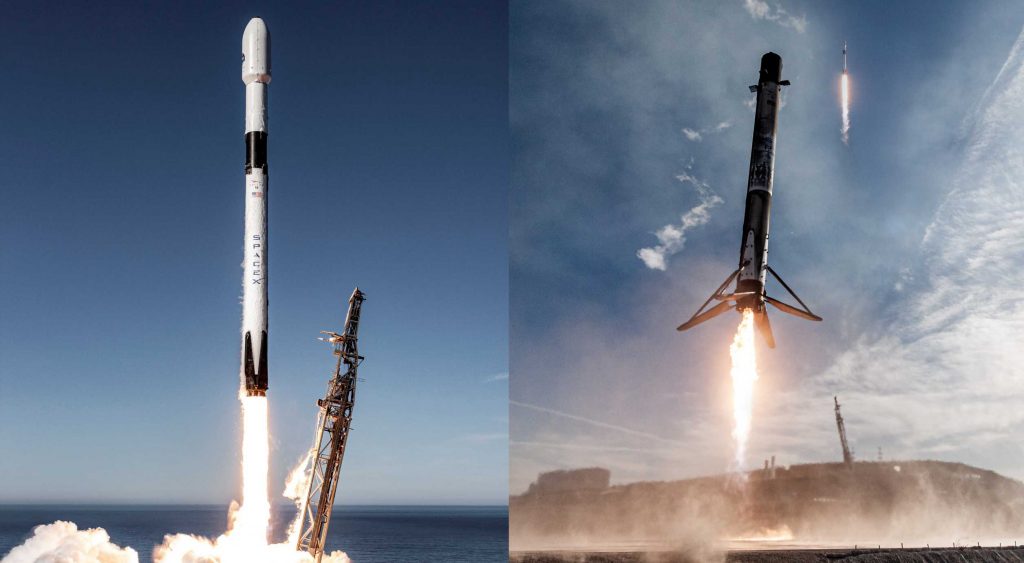
Following an apparent November 20th static fire abort and a brief 24-hour delay, B1049 is now scheduled to lift off no earlier than 9:56 pm EST (02:56 UTC), November 22nd with some 16 metric tons (~35,000 lb) of Starlink communications satellites in tow. Designed to ultimately blanket the Earth in affordable high-quality broadband internet, SpaceX has already begun to roll out a public beta test to what looks like one or several thousand users across the northern US and southern Canada.
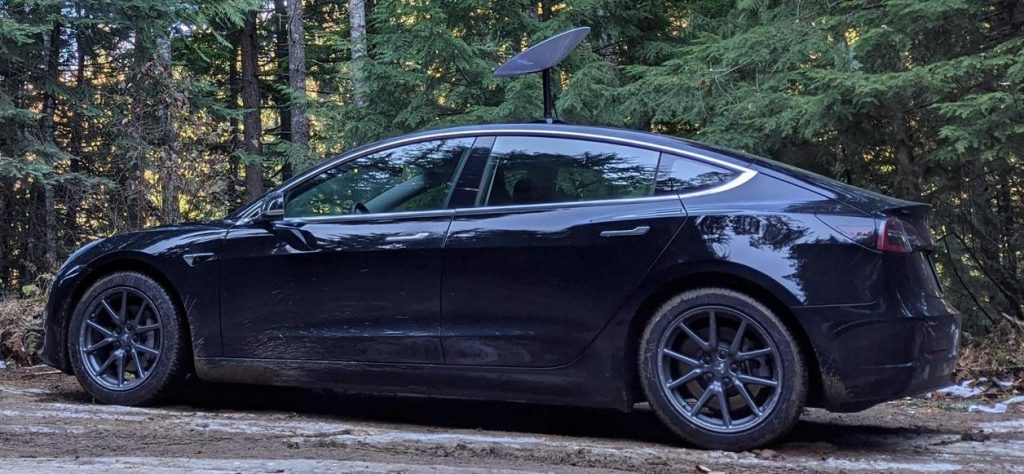
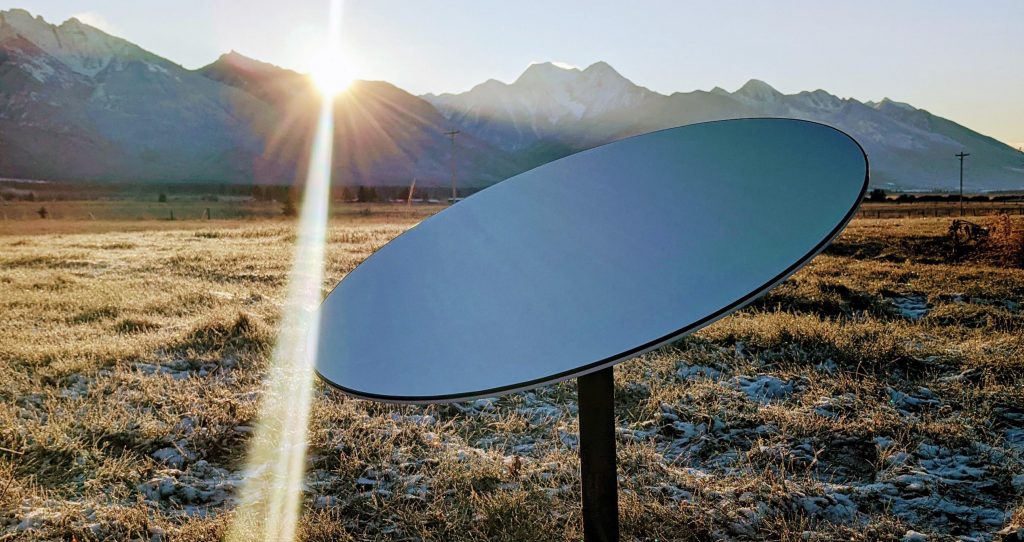
Speaking on a November 21st Reddit Ask Me Anything (AMA) thread, one of the SpaceX Starlink engineers participating revealed that the company is targeting a “wider beta” rollout as early as late-January 2021. Despite having some 820 functioning Starlink satellites in orbit, approximately a third were recently launched and are still raising their orbits or waiting in phasing orbits to properly orient themselves and maximize Starlink internet coverage.
While it’s effectively impossible to predict which orbital ‘plane’ a given batch of Starlink satellites is targeting, it’s likely that the ~300 spacecraft still making their way to operational orbits will complete their journeys within the next 60 days. In general, it takes roughly 2-3 months from any given Starlink launch for all ~60 satellites to reach their operational 550 km (~340 mi) orbits, a process usually performed in batches of 22 – each essentially representing one evenly-space ring of internet coverage a few hundred miles wide.
Despite SpaceX tracking towards a truly record-breaking year of ~25+ launches, CEO Elon Musk revealed that the company is pushing to achieve as many as 48 launches in 2021, more than half of which would likely be Starlink missions.
Tune in below to catch SpaceX’s Sunday Starlink launch live later tonight.
Elon Musk
Tesla Supercharger Diner food menu gets a sneak peek as construction closes out
What are you ordering at the Tesla Diner?

The Tesla Supercharger Diner in Los Angeles is nearing completion as construction appears to be winding down significantly. However, the more minor details, such as what the company will serve at its 50s-style diner for food, are starting to be revealed.
Tesla’s Supercharger Diner is set to open soon, seven years after CEO Elon Musk first drafted the idea in a post on X in 2018. Musk has largely come through on most of what he envisioned for the project: the diner, the massive movie screens, and the intended vibe are all present, thanks to the aerial and ground footage shared on social media.
We already know the Diner will be open 24/7, based on decals placed on the front door of the restaurant that were shared earlier this week. We assume that Tesla Optimus will come into play for these long and uninterrupted hours.
The Tesla Diner is basically finished—here’s what it looks like
As far as the food, Tesla does have an email also printed on the front door of the Diner, but we did not receive any response back (yet) about what cuisine it will be offering. We figured it would be nothing fancy and it would be typical diner staples: burgers, fries, wings, milkshakes, etc.
According to pictures taken by @Tesla_lighting_, which were shared by Not a Tesla App, the food will be just that: quick and affordable meals that diners do well. It’s nothing crazy, just typical staples you’d find at any diner, just with a Tesla twist:
Tesla Diner food:
• Burgers
• Fries
• Chicken Wings
• Hot Dogs
• Hand-spun milkshakes
• And more https://t.co/kzFf20YZQq pic.twitter.com/aRv02TzouY— Sawyer Merritt (@SawyerMerritt) July 17, 2025
As the food menu is finalized, we will be sure to share any details Tesla provides, including a full list of what will be served and its prices.
Additionally, the entire property appears to be nearing its final construction stages, and it seems it may even be nearing completion. The movie screens are already up and showing videos of things like SpaceX launches.
There are many cars already using the Superchargers at the restaurant, and employees inside the facility look to be putting the finishing touches on the interior.
🚨 Boots on the ground at the Tesla Diner:
— TESLARATI (@Teslarati) July 17, 2025
It’s almost reminiscent of a Tesla version of a Buc-ee’s, a southern staple convenience store that offers much more than a traditional gas station. Of course, Tesla’s version is futuristic and more catered to the company’s image, but the idea is the same.
It’s a one-stop shop for anything you’d need to recharge as a Tesla owner. Los Angeles building permits have not yet revealed the date for the restaurant’s initial operation, but Tesla may have its eye on a target date that will likely be announced during next week’s Earnings Call.
News
Tesla’s longer Model Y did not scale back requests for this vehicle type from fans
Tesla fans are happy with the new Model Y, but they’re still vocal about the need for something else.

Tesla launched a slightly longer version of the Model Y all-electric crossover in China, and with it being extremely likely that the vehicle will make its way to other markets, including the United States, fans are still looking for something more.
The new Model Y L in China boasts a slightly larger wheelbase than its original version, giving slightly more interior room with a sixth seat, thanks to a third row.
Tesla exec hints at useful and potentially killer Model Y L feature
Tesla has said throughout the past year that it would focus on developing its affordable, compact models, which were set to begin production in the first half of the year. The company has not indicated whether it met that timeline or not, but many are hoping to see unveilings of those designs potentially during the Q3 earnings call.
However, the modifications to the Model Y, which have not yet been officially announced for any markets outside of China, still don’t seem to be what owners and fans are looking forward to. Instead, they are hoping for something larger.
A few months ago, I reported on the overall consensus within the Tesla community that the company needs a full-size SUV, minivan, or even a cargo van that would be ideal for camping or business use.
Tesla is missing one type of vehicle in its lineup and fans want it fast
That mentality still seems very present amongst fans and owners, who state that a full-size SUV with enough seating for a larger family, more capability in terms of cargo space for camping or business operation, and something to compete with gas cars like the Chevrolet Tahoe, Ford Expedition, or electric ones like the Volkswagen ID.BUZZ.
We asked the question on X, and Tesla fans were nearly unanimously in support of a larger SUV or minivan-type vehicle for the company’s lineup:
🚨 More and more people are *still* saying that, despite this new, longer Model Y, Tesla still needs a true three-row SUV
Do you agree? https://t.co/QmbRDcCE08 pic.twitter.com/p6m5zB4sDZ
— TESLARATI (@Teslarati) July 16, 2025
Here’s what some of the respondents said:
100% agree, we need a larger vehicle.
Our model Y is quickly getting too small for our family of 5 as the kids grow. A slightly longer Y with an extra seat is nice but it’s not enough if you’re looking to take it on road trips/vacations/ kids sports gear etc.
Unfortunately we…
— Anthony Hunter (@_LiarsDice_) July 17, 2025
Had to buy a Kia Carnival Hybrid because Tesla doesn’t have a true 3 row vehicle with proper space and respectable range. pic.twitter.com/pzwFyHU8Gi
— Neil, like the astronaut (@Neileeyo) July 17, 2025
Agreed! I’m not sure who created this but I liked it enough to save it. pic.twitter.com/Sof5nMehjS
— 🦉Wise Words of Wisdom – Inspirational Quotes (IQ) (@WiseWordsIQ) July 16, 2025
Tesla is certainly aware that many of its owners would like the company to develop something larger that competes with the large SUVs on the market.
However, it has not stated that anything like that is in the current plans for future vehicles, as it has made a concerted effort to develop Robotaxi alongside the affordable, compact models that it claims are in development.
It has already unveiled the Robovan, a people-mover that can seat up to 20 passengers in a lounge-like interior.
The Robovan will be completely driverless, so it’s unlikely we will see it before the release of a fully autonomous Full Self-Driving suite from Tesla.
Energy
Tesla launches first Virtual Power Plant in UK – get paid to use solar
Tesla has launched its first-ever Virtual Power Plant program in the United Kingdom.

Tesla has launched its first-ever Virtual Power Plant program in the United Kingdom. This feature enables users of solar panels and energy storage systems to sell their excess energy back to the grid.
Tesla is utilizing Octopus Energy, a British renewable energy company that operates in multiple markets, including the UK, France, Germany, Italy, Spain, Australia, Japan, New Zealand, and the United States, as the provider for the VPP launch in the region.
The company states that those who enroll in the program can earn up to £300 per month.
Tesla has operated several VPP programs worldwide, most notably in California, Texas, Connecticut, and the U.S. territory of Puerto Rico. This is not the first time Tesla has operated a VPP outside the United States, as there are programs in Australia, Japan, and New Zealand.
This is its first in the UK:
Our first VPP in the UK
You can get paid to share your energy – store excess energy in your Powerwall & sell it back to the grid
You’re making £££ and the community is powered by clean energy
Win-win pic.twitter.com/evhMtJpgy1
— Tesla UK (@tesla_uk) July 17, 2025
Tesla is not the only company that is working with Octopus Energy in the UK for the VPP, as it joins SolarEdge, GivEnergy, and Enphase as other companies that utilize the Octopus platform for their project operations.
It has been six years since Tesla launched its first VPP, as it started its first in Australia back in 2019. In 2024, Tesla paid out over $10 million to those participating in the program.
Participating in the VPP program that Tesla offers not only provides enrolled individuals with the opportunity to earn money, but it also contributes to grid stabilization by supporting local energy grids.
-

 Elon Musk1 day ago
Elon Musk1 day agoWaymo responds to Tesla’s Robotaxi expansion in Austin with bold statement
-

 News1 day ago
News1 day agoTesla exec hints at useful and potentially killer Model Y L feature
-

 Elon Musk2 days ago
Elon Musk2 days agoElon Musk reveals SpaceX’s target for Starship’s 10th launch
-

 Elon Musk3 days ago
Elon Musk3 days agoTesla ups Robotaxi fare price to another comical figure with service area expansion
-

 News1 day ago
News1 day agoTesla’s longer Model Y did not scale back requests for this vehicle type from fans
-

 News1 day ago
News1 day ago“Worthy of respect:” Six-seat Model Y L acknowledged by Tesla China’s biggest rivals
-

 News2 days ago
News2 days agoFirst glimpse of Tesla Model Y with six seats and extended wheelbase
-

 Elon Musk2 days ago
Elon Musk2 days agoElon Musk confirms Tesla is already rolling out a new feature for in-car Grok
















